Pretty light this time, but light doesn’t mean short. There’s a lot of good tunes in this, with Luigi’s Mansion both leading it up and being well-represented in the sequence. For fun, have this playing during the trick-and/or-treating hours!
Tag: youtube
Gamefinds: Pac-Man Superfast

Part of Youtube’s doomed-to-fail Playables series, so enjoy this before it gets heartlessly deleted by Google when they decide games on their video platform don’t make sense, isn’t worth it, or whenever Netflix gives up on games and they don’t feel they need to compete on that front anymore.
The game is basically Pac-Man, but with a Championship Edition-like speedup gimmick. As you eat dots, the game slowly increases the simulation rate. it never really gets up to CE’s white-hot speeds, but it does get pretty fast. You get a slight slowdown when you finish a board and lose a life. Since you start with five lives, earn an extra one every 5,000 points, and each of a rack’s three (instead of the arcade’s two) fruit are worth at least 1,000 points, and even more as you advance to later boards, you are unlikely to run out of lives. The game ends after 13 levels, so you have a decent chance of finishing this one!
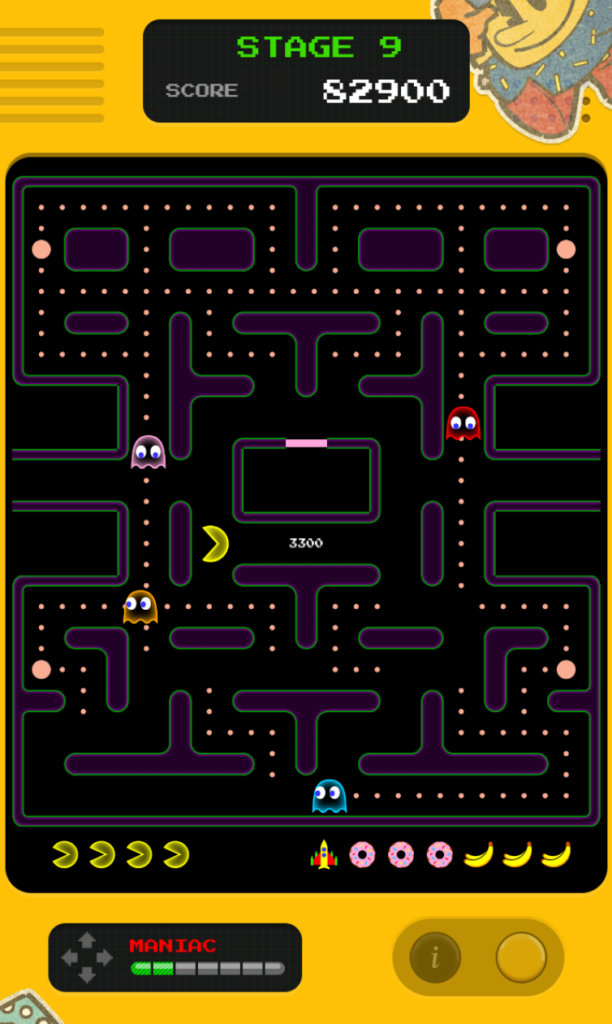
My best score is right around 150,000 points, but I was only playing casually. See if you can do better!
Sundry Sunday: Supper Mario Broth’s Mario Compilation Video
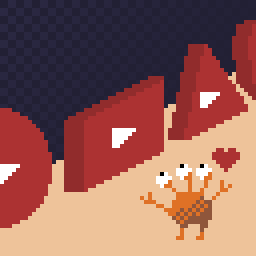
Sundry Sunday is our weekly feature of fun gaming culture finds and videos, from across the years and even decades.
The maintainer of awesome Mario obscurity site Supper Mario Broth has had a hard time of things lately. Their mother died and send them into a spiral of emotional and economic uncertainty, which the community helped out by generously contributing to their Patreon.
As part of their thanks, they posted a Youtube video to answer the question, “What is Supper Mario Broth?” and it’s, well…
It’s great! And very, deeply weird! And it’s only 2 1/2 minutes long! Every image comes from some point in Supper Mario Broth’s rich and aromatic history, and it’s a masterpiece of meme imagery. It’s here:
Every rapid-fire clip in the video is worthy of pausing on and zooming into. It’s incredibly dense! Please enjoy, perhaps with the benefit of the mind-altering substance of your choice. And here’s only a few images from the video:
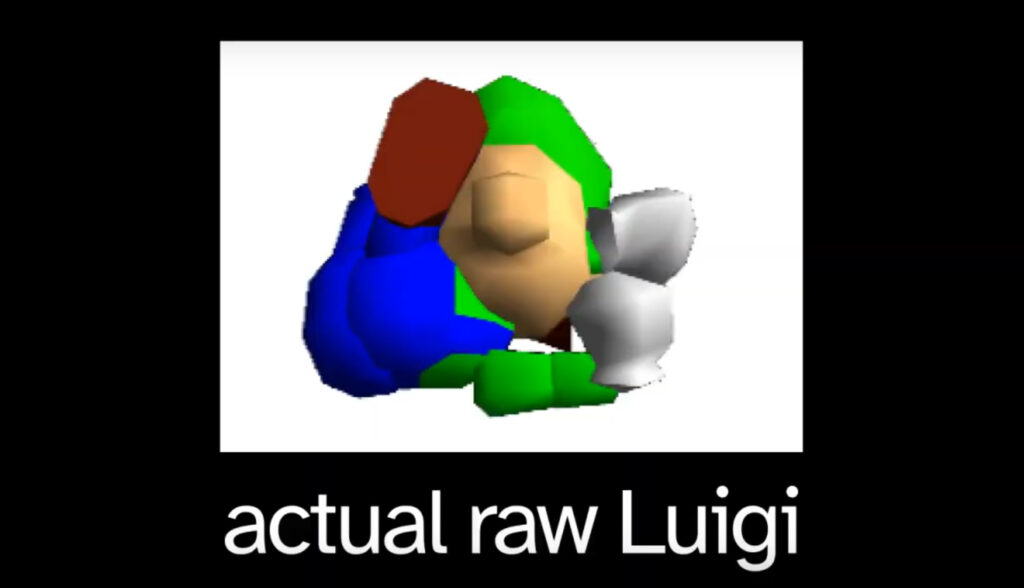
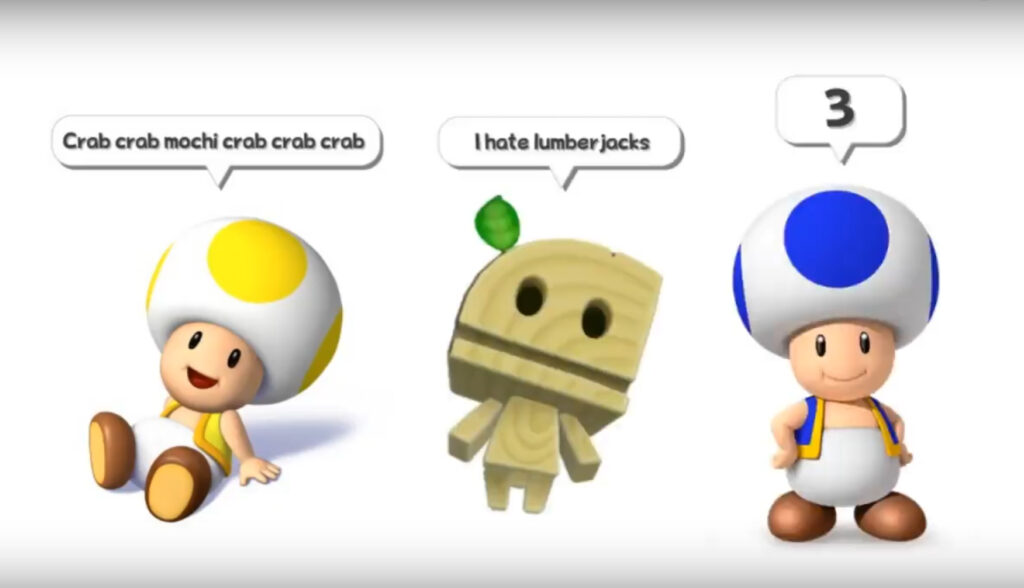
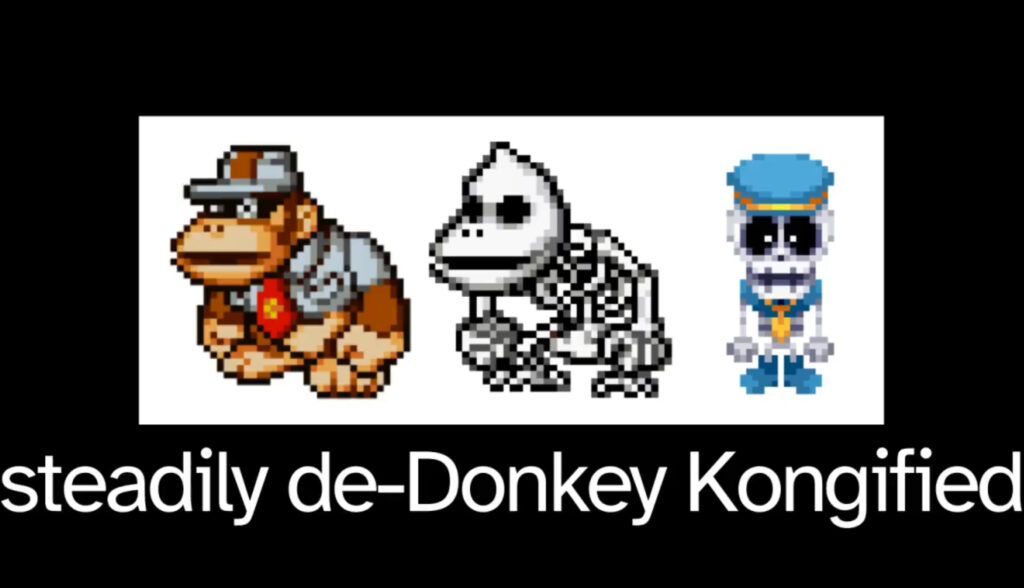
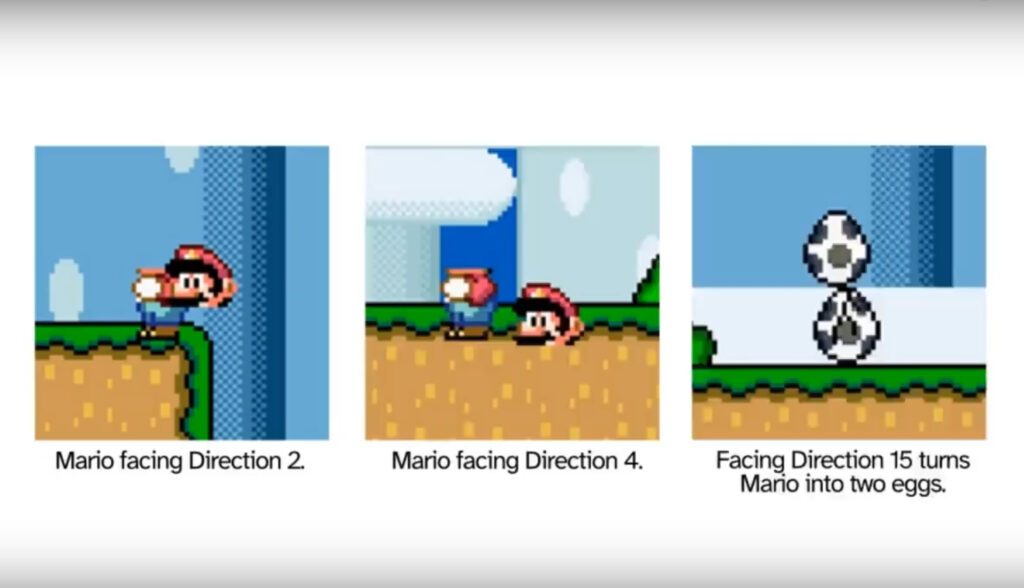
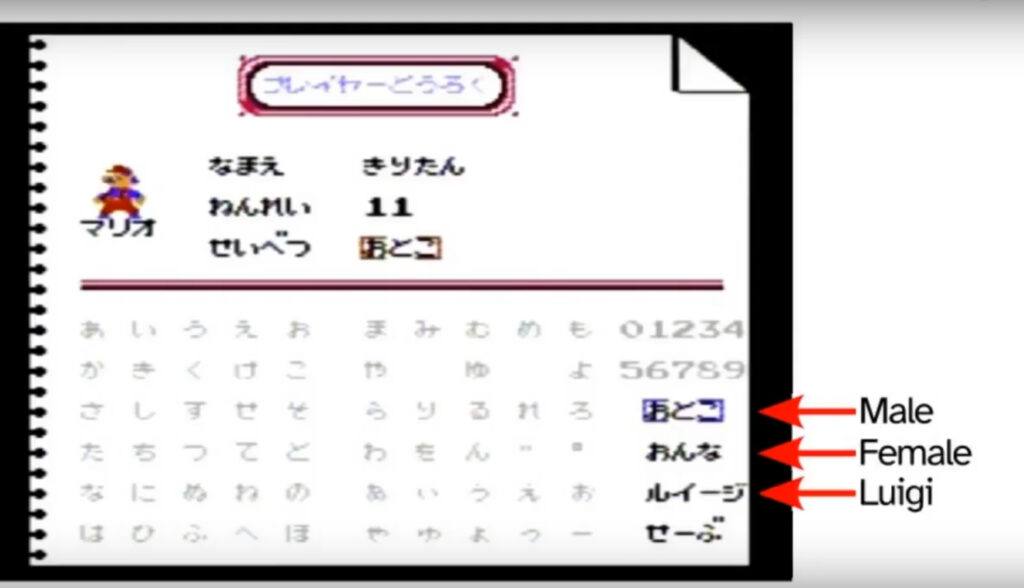
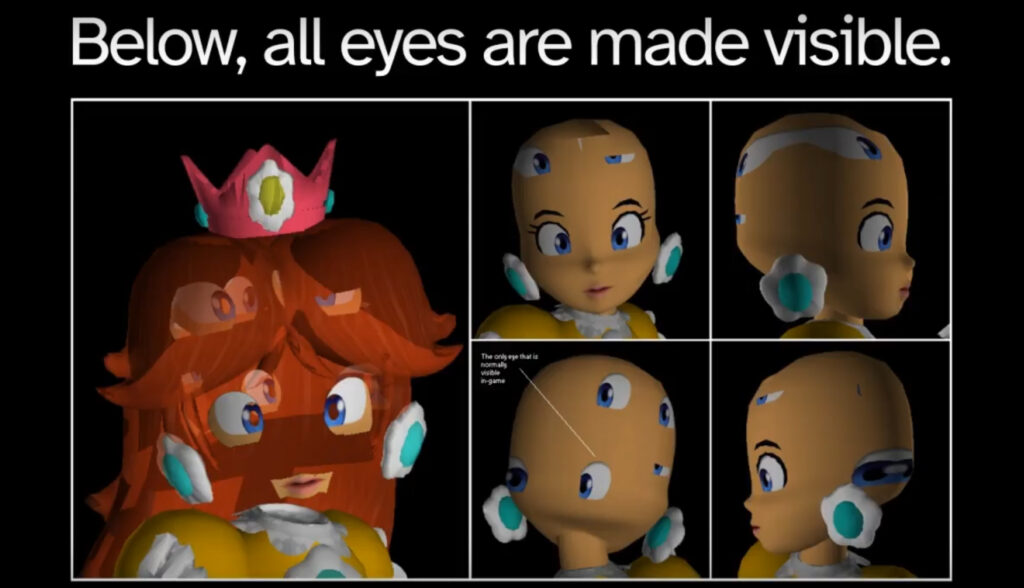
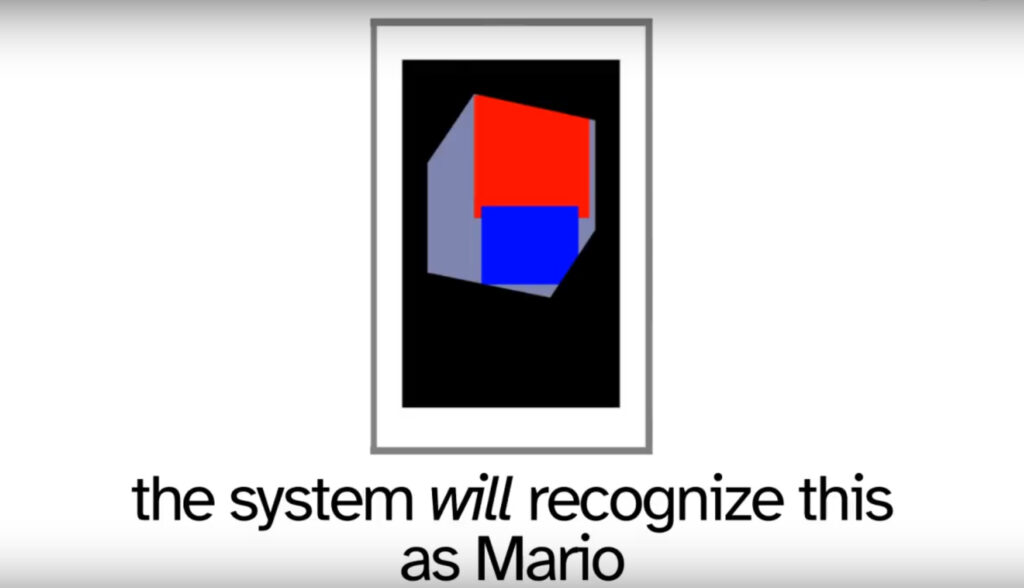

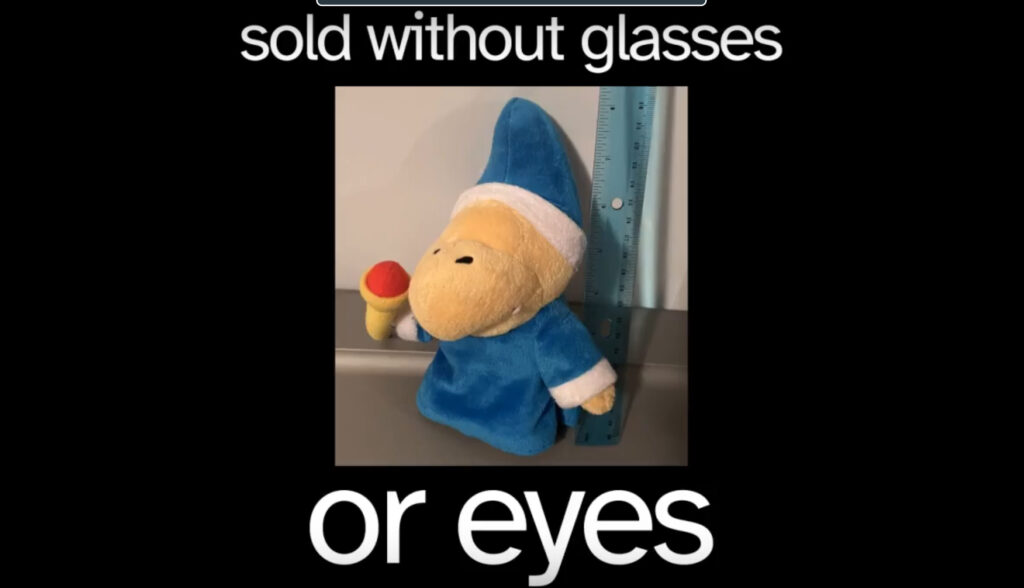
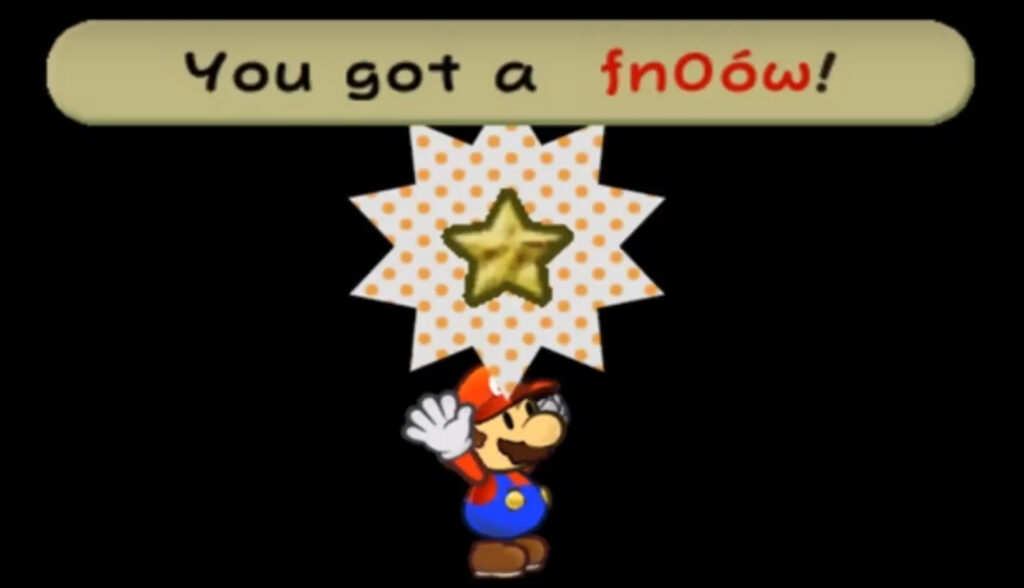
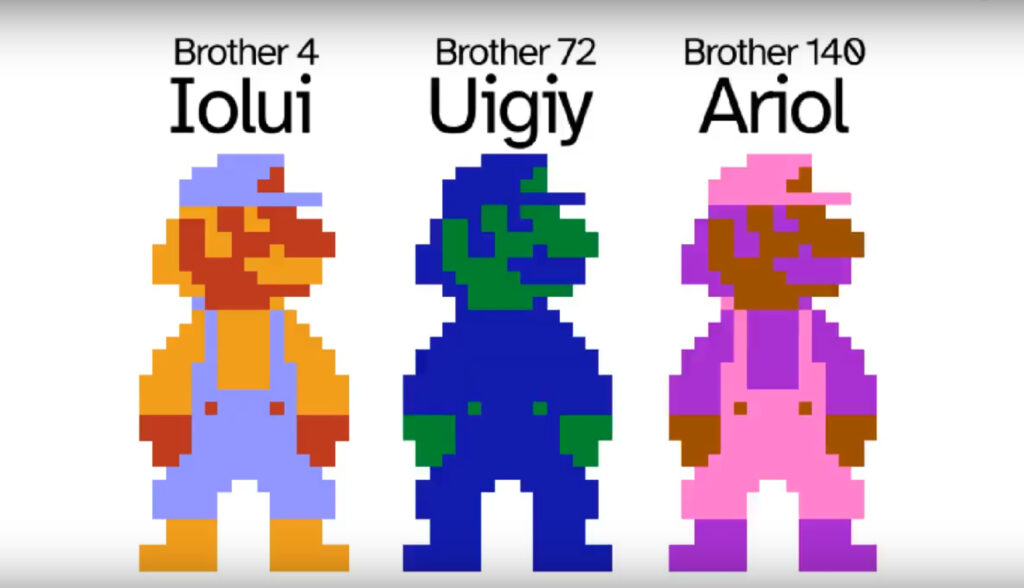
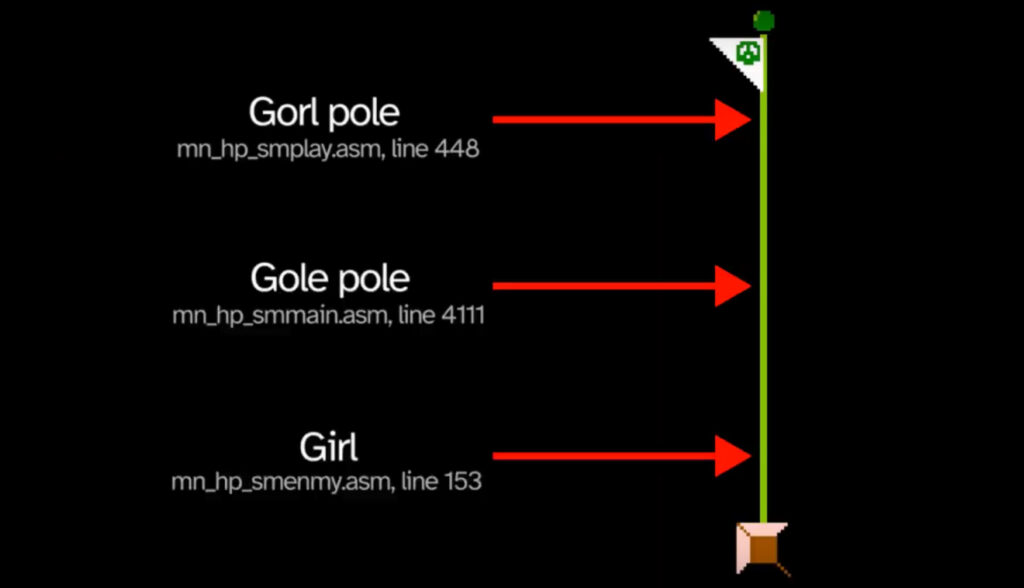
The End of Masahiro Sakurai on Creating Games
He mentions that it’s possible that he might dust off the channel from time to time, but that he feels it has accomplished its mission. Here it is (46 minutes):
To remind everyone: Sakurai is the famed creator of Kirby, Meteos and Smash Bros. In the video, he relates the surprising fact that no only did he write out nearly every script, 256 in all, before the first episode even aired, but he also filmed them all in advance too! That’s why he looks older in this video: it’s the first time he’s been before the camera, with just three exceptions, since it started. The video, in fact, is mostly about how the series itself was made, which as it turns out was done without a camera crew, and in a residence of his too, outside of a recording studio and without soundproofing, so production had to pause if am ambulance drove by outside, and couldn’t happen at all if it was raining.
I have no doubt that these videos will be an important document in the coming years, not just as a guide to making video games, but also preserving the processes of current-day game development, and the words and thoughts off one of the foremost game designers of our age. BTW, note the split second of Rogue at 18:58!
The video has always had a feel like maybe Nintendo was helping out with it, but as it turns out, other than approving the use of their game footage, they weren’t greatly involved. The similar feel may be due to the use to HIKE, a.k.a. QBIST, a production company that Nintendo also uses for some of their videos.
To close this out, I’ll link a short bit from earlier on, at a mere 2 1/2 minutes, the video about Sakurai’s cat, Fukurashi. Meow, or perhaps, nya!
Video Games 101
We’ve linked the Youtube channel U Can Beat Video Games a number of times here previously. Their posting rate has fallen off a bit lately, likely because they’ve been tackling longer fare. It isn’t a simple matter to construct comprehensive video strategy guides and walkthroughs to lengthy JRPGs like Final Fantasy IV or Dragon Quest II.
While we wait for their next effort-intensive guide, we can watch episodes off Video Games 101, courtesy of Brigands and his other channel Let’s Play With Brigands. It’s been going for a couple of years now, and has tackled some formidable games, including The Adventures of Bayou Billy, Castlevania III and the infamous Battletoads. A particular one to check out is the bizarre Dr. Chaos (1h,7m), a game that’s half janky platforming, half haunted house exploration.
VG101 has a very different vibe from UCBVG. It doesn’t try to be nearly as comprehensive, mostly showing a typical playthough. It doesn’t provide maps or many secrets. But it does have some strategy callouts, mostly provided by their whimsical “TAs,” three side characters who wear silly costumes. The best of these is undoubtedly Fluff, a fairly realistic cat puppet, who lives in a lavish study and smokes a bubble pipe, and who provides interesting trivia about the games being played. It’s worth checking into if you have the time and inclination!

Sundry Sunday: Dumb Lawyer Quotes in Ace Attorney

Sundry Sunday is our weekly feature of fun gaming culture finds and videos, from across the years and even decades.
Chessete‘s video series Dumb Lawyer Quotes in Ace Attorney is a series of dumb statements made by lawyers animated in the style of the Ace Attorney Games. Many of them are even stupider than the statement I just made. Here are just the first two.
The first (3 1/2 minutes):
The second (4 minutes):
The rest can be found in this playlist (9 videos)!
Why is NES Ikari Warriors So Terrible?
Displaced Gamers’ series on investigating design and programming problems with NES games continues with a game that I’m surprised isn’t more notorious, Ikari Warriors. (21 minutes)
The biggest problem with Ikari Warriors is probably that it was ported by infamous anonymous NES developer Micronics, who even in their best efforts tended to produce buggy, janky messes. Some other games they made: Ghosts & Goblins, 1942, Tiger-Heli, Elevator Action, Super Pitfall and Athena. All the other problems have their root in that.
Ikari Warriors runs at 15 fps. One game frame for every four screen frames! It uses expensive multiply routines instead of look-up tables for movement! Everything is slow even accounting for that! And it tries to adapt the arcade game’s character rotation system, which supports 16 directions (even though there are only character graphics for 8 of them), and forces the player characters to rotate through them to move.
All of this overhead makes Ikari Warriors really slow and frustrating to play. Displaced Gamers not only diagnoses the problem, but even makes a game attempt to fix them. And they come to the conclusion that it has additional problems, beyond even these, and really needs a bit of a redesign to really make it playable. Ah well, it was a good attempt.
Jeremy Parish’s NES World Vol. 1
It’s too late to inform you of preorders, those ended yesterday, but Jeremy Parish, whose Video Works series is, along with Chrontendo and Atari Archive, among the best and most informative video game history series on Youtube, and the whole internet, is preparing to sell The NES Era Vol. I, a book that’s as complete a picture of the early 3rd generation video game world in Japan as has ever written. If you’ve been following the channel you’ve seen reviews of strange and obscure games have hardly ever been heard off outside of jolly old Nippon.
This promo compilation presents a good selection of the games covered both on his channel and his upcoming book (2 1/2 minutes):
It is true that publisher Limited Run Games has a book in the works from me about Mystery Dungeon, but I’d be posing this here regardless. It’s an important work, and if it’s as fun as the video series then it’s an essential purchase when it comes out. It’s made of candy!
Sundry Sunday: Foolish Phoenix Wright

Sundry Sunday is our weekly feature of fun gaming culture finds and videos, from across the years and even decades.
A scene from the career of Phoenix Wright: an encounter with the brilliant, although linguistically-challenged, Franziska Von Karma. It’s from Mornal, and voiced, and Franziska animated, by Paula Peroff. One minute.
Masahiro Sakurai on Satoru Iwata
I haven’t posted much from Kirby and Smash Bros. creator’s prolific Youtube channel on game development. There’s a lot of good information in there. The channel is winding down now after a good run, but now, near the end, he’s posted at one of his final videos a remembrance of his old boss, and beloved Nintendo company president, the late Satoru Iwata. (10 minutes)
It’s now been nearly 10 years since Iwata’s passing, and the outpouring of respect, admiration, and even affection, for him over that time has been remarkable. There’s a sense that we lost an amazing figure. Sakurai is brilliant in many ways, but he calls Iwata the smartest man he’s ever known. He strove to be polite, not to take offense in conflict, and to always act with logic instead of emotion. He helped transition Nintendo from being under the sole control of the Yamaguchi family to the more varied and ingenious company they’re known for being today.
In addition to running the company, Mr. Iwata started out as a programmer a HAL Laboratory. Think of how rare that is for a multi-billion-dollar company. They didn’t hire your standard MBA out off a business school, but put their future in the hands of a former coder. I have no illusions that, in many cases, that could have been disastrous, because programming and management require different skill sets, but Mr. Iwata pulled it off.
Sakurai finishes the video with a story of the last time he saw Iwata alive. He calls Iwata the person in the world who understood him the most. When Iwata wanted to see him, he didn’t delegate it to an assistant but always emailed him directly. It seems that Iwata was a good person who many admired and respected, but to Masahiro Sakurai, he meant something more.
The video isn’t very long, and there’s a sense of finality to it, not just in Sakurai’s memories of Iwata, but of the ending of his Youtube channel. Masahirro Sakurai on Creating Games is such an unusual series: an important and brilliant working game creator telling the world personally of his views as a creator. Such an unusual move! But Iwata created both the Iwata Asks series, and the Nintendo Direct promotional videos, which may have inspired Sakurai’s own series. Both men understand the importance, often neglected I think, of clear communication, both between others and the world.
Thank you, Mr. Sakurai, for what you’ve told us. And thank you, Mr. Iwata, for all your hard work.
Whatever Happened to Toadsworth?

Another Nintendo post. The company’s tight-lippedness, which has intensified since the days of Iwata Asks, lends itself to fan speculation about nearly everything, and part of that everything is whatever happened to Peach’s minister, Toadsworth. In Japanese he’s キノじい, Kinojii, which I think implies he’s second in rank behind Peach in the Mushroom Kingdom hierarchy. Or was.
Toadsworth was introduced as a third in the vacation party, with Mario and Peach, in Super Mario Sunshine, likely as a kind of chaperone to make sure it wasn’t Peach and Mario taking a personal trip together, which I’m sure would have been a scandal in the fungal broadsheets, their ruler traveling alone with a swarthy Italian. The kooparazzi would be all over it.
Throughout the Gamecube era, Toadsworth was a prominent element of Mario lore, racking up appearances in many games. He was in Paper Mario: The Thousand-Year Door, Mario Kart DoubleDash, several Mario sports, and especially in the Mario & Luigi games, which fleshed out the character more than any other source.
Piantapedia on Youtube made an 11-minute video exploring Toadsworth’s history. It contains the information that Toadsworth was explicitly removed from the Super Mario Bros. Movie, replaced with a character known as Toad General, which is as good a sign as any that Nintendo is purposely not providing the character any more exposure, except perhaps in remakes like the one of Thousand-Year Door.
Isn’t it odd? Nintendo, when given opportunities to expand upon Mario lore, whenever they take a strong stab at it, often walks it back to the baseline of the original Super Mario Bros. They seem reluctant to meaningfully develop the Mario universe. Sometimes this happens in immediately consecutive games: remember how Super Mario Galaxy 2 abandoned nearly everything from the first Super Mario Galaxy, pretending it didn’t exist, when presenting its story?
The fact that TYD wasn’t rewritten to remove Toadsworth indicates the character isn’t poisonous to Nintendo, necessarily, but neither do they seem interested in giving him any more exposure. For shame! Who knows what Peach and Mario might get up to behind closed doors without Kinojii to watch over things?
Why Is “Snowman’s Lost His Head” So Hard?
Super Mario 64 has 120 Stars to collect, 90 of them from individual named missions in the game’s 15 courses. Many players find that a fairly early one, Snowman’s Lost His Head in Course 4, Cool Cool Mountain, is among the most vexing. When I played it, I found it a illustrative example of what happens when the game gives you imprecise directions, and just asks you to try. I did try, time after time, until it just seemed to work, for some reason I couldn’t figure figure out, and by that point I was just happy to be done with it.
Cool Cool Mountain is a big area with sloped paths leading from the top leading to the bottom. For this Star, some ways up there’s a snowball that talks to you, asking if you could lead it to its body, a larger snowball, some ways down. As it rolls it grows in size. Ideally you stay ahead of it the whole way, and managed to get it to crash into its body. If this happens, it spawns a Star; if it doesn’t, then it doesn’t appear, leaving you to exit the course from the pause button or collect a different star before trying again.
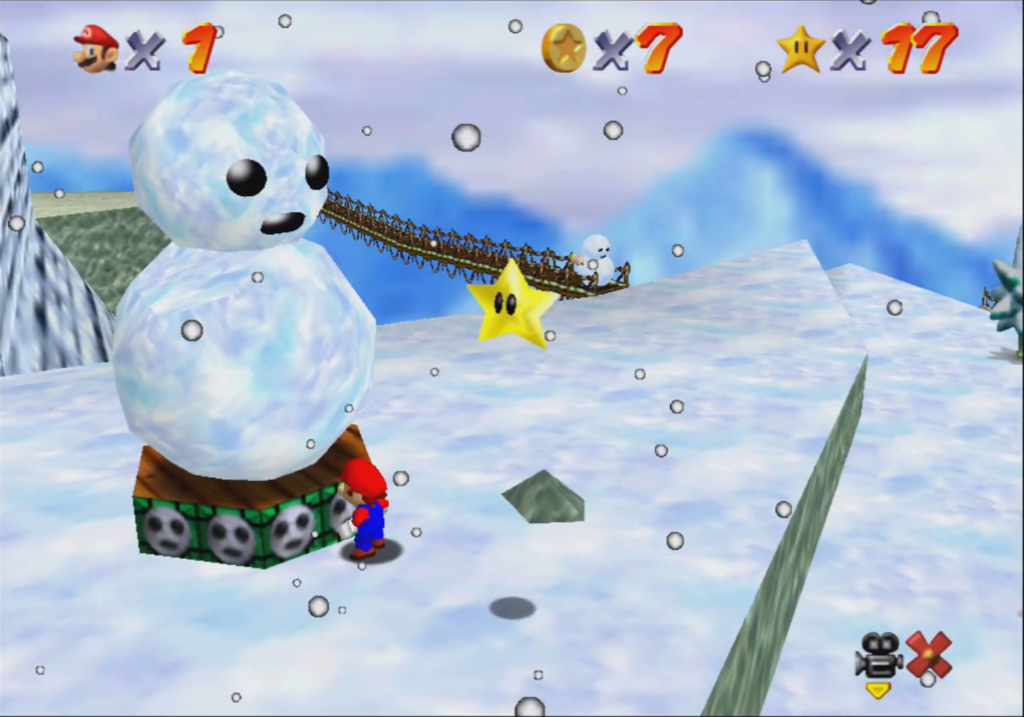
The problem is, you can do exactly what I explained and the snowhead still won’t collide with the snowbody. Sometimes the head seems to aim at your position near the end of its route, but sometimes it doesn’t, and even when it does, you have to be standing in a narrow region in order for it to produce the necessary impact.
As it turns out there’s three requirements. Kaze Emanuar broke them down in a two-minute Youtube video last year. It’s pretty short as far as these videos go!
The requirements are:
- You must enter a single invisible sphere partway down, on the bridge along the route, before the snowball does on its trip. If you don’t, the snowball will continue, but it won’t even try to hit the body. You’ve already failed it.
- At a specific spot towards the end of its route, it’ll check if you’re within a cone in front of its movement. If you aren’t, then it’ll just continue on and out off the course as if you hadn’t hit he sphere.
- If you are within that cone, it will then direct its movement towards your location. If you aren’t standing so it’ll collide with the body, it can still miss it and you’ll fail the star.
The thing is, to a player, it looks like you’re only really needed at the end of the route. Why do you have to hit the sphere first? Even if you manage to stay ahead off the snowball the whole way, if you don’t touch the completely invisible sphere, the whole thing will break. And since it’s on a bridge, it looks like it should be fine to take a shortcut off onto the lower path.
Further, you have to be both within the cone and in a place where the snowball will collide with the body. There are many places you can stand that would direct the snowball to hit the body, but aren’t in the cone! The cone is also invisible, and the range off places you can stand to complete it is quite narrow.
Watch the video for the full details, it’s really short! Kaze does a good job of explaining it.
